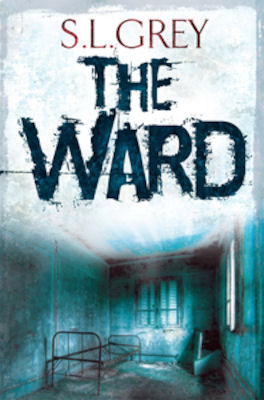First impressions have a nasty habit of lasting forever, so it was well that The Mall made an immediate impact, harrowing off the bat and darkly hearty thereafter. But more than a year on, what’s remained with me is its cutting criticism of consumerism; its self-aware skewering of today’s culture of consumption.
The first collaboration between South African authors Sarah Lotz and Louis Greenberg under the open pseudonym S. L. Grey was a hair-raising horror novel in its own right, however: an unsettling study of two fractured characters trapped in a mega-mall as magnificently twisted as their own minds. It took us downside, to a world somehow under ours, where legions lived simply to shop, or serve, or else squash those individuals who refused to submit to management’s demands.
Though the story of Dan and Rhoda is over—and how!—The Ward embiggens this nightmarish scenario brilliantly, introducing downside more quickly than before and giving readers a longer look at its larger infrastructure.
We soon see how horribly organised the operation is—how committees meet to debate the merits of repurposing a person’s parts, for instance—but this insight hardly detracts from the unknowableness that is amongst The Ward’s most terrifying tools.
In the same way as the previous pair, two new characters trade chapters throughout The Ward. The first is “Farrell. Josh Farrell,” a full-of-it fashion photographer who awakens in New Hope Hospital with no memory of his admission. It says as much as I should about Farrell that though he awakens temporarily blind, with a palimpsest of puncture marks criss-crossing his arms, what really worries him is his missing iPhone. After all, how can Farrell keep his meeps up to speed without instantaneous access to MindRead?
We’re on a first name basis with our other protagonist, Lisa Cassavetes. Hers is a more sympathetic perspective than Farrell’s by far… though readers can’t completely invest in Lisa either. She’s a plastic surgery addict with body dysmorphic disorder come to New Hope—known as No Hope by its long-term clientele—seeking treatment no other hospital will agree to. But the speed with which the doctors here clear her prayed-for procedure leaves even Lisa feeling uneasy, then when she tries to leave she sees something she can’t believe:
“I run out into the corridor. It appears to be as deserted as before, but then I catch a glimpse of movement. A bulky, malformed shape is shuffling towards the far end. There’s something… wrong about the way it’s moving, as if the proportions of its body are skewed. It’s too far away for me to figure out if it’s because its legs are too short, its arms too long or the head too big. It pauses, turns around as if it can feel me staring at it — and then it’s gone.”
Lisa and Farrell’s narratives come together more immediately than Dan and Rhoda’s did, and there are other differences between The Mall and this new novel, but out of the gate, I’m afraid The Ward feels like a retread of familiar (and thus less terrifying) territory—an impression which persists until we descend into a very different downside. Gone are The Mall’s shoppers and blank-faced sales assistants; in their place, picture anonymous nurses performing obscene procedures on misshapen patients.
There’s no shortage of body horror in this book, nor of more meaningful fear. To grotesque effect, Grey often calls up the uncanny, including examples of disruption, discordance, doubling and dismemberment. But The Ward’s most successful scares emerge from its pitch-perfect setting, which instantaneously evokes an atmosphere that is never less than alarming:
“Listen to the quiet conversations of the nurses, the old women moaning in pain like mourners at a funeral, the building breathing, the stale air circulating, the tick of the drip machine. And underneath it all, a distant thrum, like the hospital is built over a massive beehive, or a full stadium buried hundreds of metres deep.”
Newcomers are apt to take measurably less from The Ward’s explanations and elaborations than returning readers, but this is an eminently accessible novel nonetheless: short, sharp and shocking, with powerhouse pacing after a slow start, great characterisation from first to last, and an unforgettable setting that trades on real repugnance rather than The Mall’s counter-capitalist satire. S. L. Grey’s depiction of postmodern horror is practically peerless, so come one, come all to No Hope hospital. “If you aren’t at death’s door when you get here […] you will be when you leave.”
In a good way, I dare say.
Niall Alexander reads and writes about all things weird and wonderful for Tor.com, Strange Horizons and The Speculative Scotsman. Sometimes he tweets about books, too.










